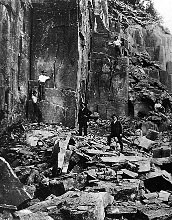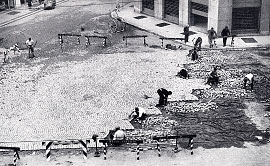|
|
 |
 |
 |
    |
 |
You can reach us by
e-mail, phone or regular
mail. We look forward
to hearing from you.
818-402-0711 more
|
|
 |
|
|
|
|
|
|
 |
 |
 |
   |
 Porphyry - A Historical Perspective
Porphyry - A Historical Perspective
Porphyry has been used for over two thousand years by the ancient civilizations of Babylon, Egypt and Roman empires with relics and sculptures having been discovered within these regions.
In Italy, porphyry was used for hundreds of years in local construction and for symbolic decorative applications. In Trentino, Italy during the early 1900's, numerous commercial quarries were operating and have since developed in to a full scale global source of porphyry materials. The skill of the Trentino tradesmen enabled them to make innovative and technical advancements that established the Trentino region as a centre for quality masonry and stone production. Today, there are almost one hundred porphyry quarries in the world, primarily located in Italy and the South American countries of Mexico and Argentina. However, the majority of the worlds porphyry supply is imported from Italy due to the first class practices implemented by the Italian quarry tradesmen.
 Porphyry - Physical Properties
Porphyry - Physical Properties
The natural beauty of Porphyry stone is due to its Volcanic origins. The stone is comprised of igneous properties and formed during a lengthy and slow cooling process.
Its technical characteristics are evident due to porphyry stone being highly compressive strength, resistance to impact and abrasive actions as well as flexuraly resistant. Porphyry stone is quarried in a series of vertical, monlith or stratified blocks. Due to its geological formation the stone breaks naturally at the quarry site leaving a cleft surface.
|
 |
|
|
 |